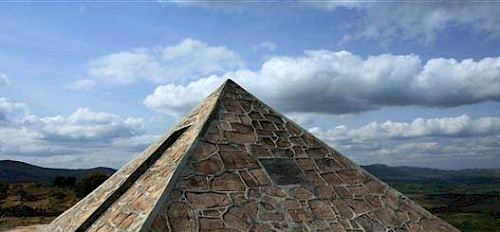Mount Kikizi, also known as Mount Gikizi, is a breathtaking natural wonder located in southeastern Burundi. With an impressive height of 2,144 meters (7,035 feet), it is among the highest mountains in the country.
Mount Kikizi is located in Bururi Province, surrounded by lush landscapes and rolling hills characteristic of this region of Burundi. The mountain plays a vital role in the history and hydrology of the country. In 1937, a pyramid was erected about 2,000 meters high on its slopes to commemorate its importance as a potential source of the White Nile River.
Adding to its historical appeal, Mount Kikizi is closely associated with the Ruvyironza River, a major tributary of the Ruvubu River. The Ruvyironza rises near Mount Kikizi, flows northwest, and eventually joins the larger river system that contributes to the Nile Basin.
Mount Kikizi attracted international attention when Burkhart Waldecker, a German explorer, identified its connection to the source of the Nile. Waldecker's explorations highlighted the mountain's role in the vast network of the Nile, underscoring its hydrological importance. His work contributed to a deeper understanding of the region's river systems and the significance of Burundi's topography. When Waldecker discovered the source in Burundi, he built a stone pyramid with a Latin inscription that reads: "CAPUT NILI MERIDIANISSIMUM", meaning "the southernmost source of the Nile".
The Ruvyironza River, which rises near Mount Kikizi, is celebrated as the longest source of the Nile River. Flowing northwest, it joins the Ruvubu River, which later joins the Kagera River before entering Lake Victoria. The Ruvubu is named after the Kirundi word for hippopotamus, imvubu, because the river is home to many hippos. These rivers are essential to the Nile basin and have ecological and cultural significance to the region.
The upper Ruvyironza region is characterized by savannah and a densely populated landscape. The river is vital to local agriculture, supporting year-round farming in its surrounding wetlands. However, environmental concerns, such as soil erosion and unregulated farming practices, have posed challenges to the sustainability of the river.















